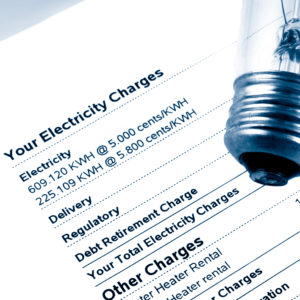This summer saw record-busting heat across the United States, with 90- to 100-degree days throughout the East, South and Midwest lasting well into September.
When temperatures soar, so do electric bills. These rising bills are an aggravation for most people. But for 31 percent of American households, they can be much worse. They can force families to choose between paying their electricity bills and being able to put food on the table, or fill their prescriptions.
They can lead to people turning off the air conditioner to save electricity, which can have deadly consequences for elderly asthma patients. Or they might have to skip payments, risking disconnection.
These 31 percent of Americans are the ones considered “energy insecure,” according to U.S. government data. Every hot summer — and every cold winter — presents difficult choices.
That number is unacceptably high on its own, but it’s much higher for some populations. It rises to 51 percent for households with annual income below $20,000, 52 percent for black households, and 62 percent for Native American and Alaska Native households.
Think about this for a moment. In one of the richest countries in the world, almost a third of people — and most people of color and poor people — have trouble paying for enough energy to live a healthy and comfortable existence.
We’re not talking about being able to heat a swimming pool or operate a large number of electronic gadgets at home. We’re talking about heating one’s home adequately in a frigid winter or keeping it cool enough to avoid serious health consequences during a blistering summer heat wave.
We often hear that fossil fuels are a necessary source of affordable electricity. But it’s plain as day that our fossil-fuel-powered, dirty energy system is leaving millions of people out.
At the same time, the very people who can least afford the benefits of our energy system are paying a disproportionate share of its costs. One illustration of these unfair costs is the stark racial disparity in exposure to nitrogen oxides, which are pollutants produced by burning fossil fuels. Another is the higher rate of pollution-related asthma experienced by people of color and poor people.
One key tool to address these inter-related problems is energy efficiency, I argue in a recent Institute for Policy Studies report.
Energy efficiency isn’t just about lowering power bills or limiting pollution. It can also be a tool for mitigating some of the deepest inequalities in our society. Energy efficiency addresses the inequalities of energy insecurity and environmental injustice at both ends, by making energy bills more affordable for vulnerable people while also reducing the need for energy production (and therefore reducing the associated pollution).
Just and effective energy efficiency policy must include mechanisms to ensure that the most affected people have access to its benefits. In the IPS report details many successful mechanisms to do that across the country.
These include requiring utilities to fund energy efficiency programs for low-income households, and to offer assistance for low-income households facing imminent disconnection for unpaid bills. Illinois has passed legislation with these provisions for utilities. Other states, like Maine and New York, fund energy efficiency programs for low-income households themselves.
Other smart ideas include doing outreach about energy efficiency programs to people who need it the most, ideally performed by community members themselves. Knoxville, Tennessee, for example, employs local young people as ambassadors to perform energy efficiency outreach in their own communities.
Energy efficiency isn’t just an expense — it’s a huge job creator. Nationally, it’s responsible for more than double the number of fossil fuel extraction and power production jobs combined. In Oregon, smart state policy has led to nearly half of new energy efficiency jobs going to people who have been left out of the fossil fuel economy, like women and people of color.
Energy insecurity isn’t insurmountable. States and cities can make life-saving energy accessible to poor and vulnerable people with well-designed energy efficiency policy, so no one has to choose between paying for food or keeping the heat on in an Alaska winter, and no one has to turn off the air-conditioner to save electricity in an Arizona summer.

